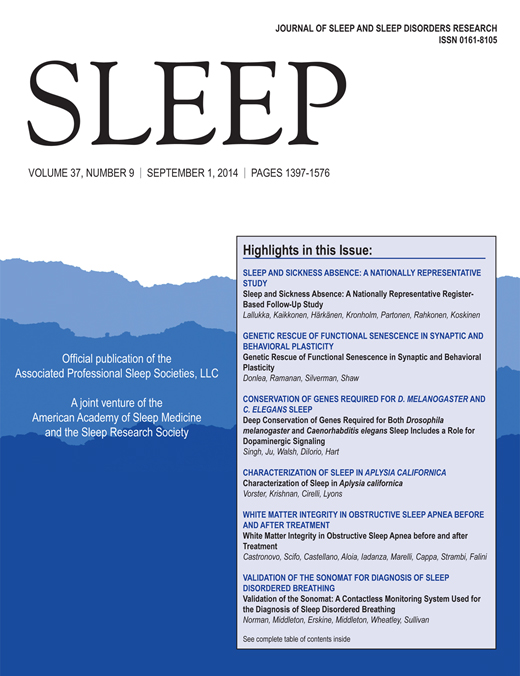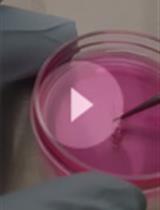- EN - English
- CN - 中文
Measuring Caenorhabditis elegans Sleep during the Transition to Adulthood Using a Microfluidics-based System
使用基于微流体的系统测量处于过渡到成年期的秀丽隐杆线虫的睡眠
发布: 2017年03月20日第7卷第6期 DOI: 10.21769/BioProtoc.2174 浏览次数: 9469
评审: Jyotiska ChaudhuriPrashanth SuravajhalaAnonymous reviewer(s)
Abstract
C. elegans sleep during development is regulated by genes and cellular mechanisms that are conserved across the animal kingdom (Singh et al., 2014; Trojanowski and Raizen, 2016). C. elegans developmental sleep is usually assessed during the transition to adulthood, a 2.6 h time interval called lethargus (Raizen et al., 2008; Singh et al., 2011). During lethargus, animals cycle between periods of immobility (sleep bouts) and periods of active locomotion (motion bouts). Sleep bouts resemble sleep in other species based on behavioral criteria, including cessation of feeding and locomotion, increased arousal threshold for response to sensory stimulation, rapid reversibility, and homeostatic response to sleep loss. Several assays have been developed to study sleep in C. elegans (Belfer et al., 2013; Bringmann, 2011; Nelson et al., 2013; Raizen et al., 2008). Here, we contribute a detailed protocol for assessment of C. elegans sleep during lethargus, which has been used successfully by many research groups, incorporating simple microfluidic chambers, a low cost camera with lighting system, and computational analysis based on image subtraction. We note that this system could be easily adapted to assess sleep in any small animal.
Keywords: C. elegans sleep (秀丽隐杆线虫的睡眠)Background
C. elegans sleep is often assessed based on the cessation of locomotion, which is a common characteristic of sleep across the animal kingdom. Due to the intermittent nature of sleep bouts during C. elegans developmental sleep, computer vision is generally used to track the activity of C. elegans during lethargus. Animals are constrained to a single focal plane to keep them in focus. Because C. elegans can be exhausted in liquid by prolonged swimming (Ghosh and Emmons, 2008), C. elegans sleep researchers rely almost exclusively on assay formats that enforce crawling, not swimming. Also, because food may dramatically alter behavior, C. elegans sleep studies are usually undertaken in the presence of bacterial food. There are two major assay formats: animals confined to larger spaces and tracked across multiple developmental stages (Belfer et al., 2013; Nelson et al., 2013; Raizen et al., 2008) or animals confined to small spaces and tracked for shorter time intervals (Bringmann, 2011; Singh et al., 2011). The original report of C. elegans sleep utilized the first assay format, which permitted detection of sleep during each larval lethargus as animals crawled on the surface of a culture dish. This required one camera per animal, which limited throughput (Raizen et al., 2008). More recent work generally uses small chambers arranged in tight groupings, which allows simultaneous tracking of multiple animals with one camera. Various small-chamber formats are available. An automated polydimethylsiloxane (PDMS) chamber system is available with 60 chambers, but this format requires high levels of consistency in chamber loading with media and seeding bacteria, which is best achieved with robotic systems (Nelson et al., 2013). As these systems are not widely available to academic labs, most groups use other assay formats. Very small chambers constructed from agarose hydrogels have also been used to constrain locomotion of L1 larvae and it is possible that these could be reformatted for use with older C. elegans larval stages (Bringmann, 2011). But, agarose hydrogels are not easily reusable and most C. elegans sleep research focuses on the last lethargus, during the transition to adulthood. Here, we describe in detail a tractable PDMS-based, small chamber assay system, which allows simultaneous tracking of up to 10 L4 to adult animals. This is a variation of an earlier 6-chamber format assay (Singh et al., 2011). The assay is based on reusable PDMS chips and requires a minimal space to track animals in the last larval lethargus. The small chamber assay format described here requires reagents and equipment that are readily available in most C. elegans laboratories and has been adapted by several groups beyond our own.
Materials and Reagents
- 1.5 ml Eppendorf tube
- Glass slides (Fisher Scientific, catalog number: 12-550-343 )
- Tape (e.g., FisherbrandTM 0.75 in. colored label tapes, Fisher Scientific, catalog number: 15-901-20A for white tapes)
- 100 mm Petri dishes (e.g., Sigma-Aldrich, catalog number: P5856 )
- Cover slip, 25 x 25 mm, glass (VWR, catalog number: 48368084 )
- 15 ml Falcon tubes (Corning, catalog number: 352095 )
- Parafilm (Bemis, catalog number: PM999 )
- FisherbrandTM Pasteur pipette (Fisher Scientific, catalog number: 22-183624 ) with dropper bulb
- Double sided tape (e.g., Scotch permanent double sided tape, Staples, catalog number: 504829 )
- C. elegans strains: standard wild type laboratory strain, N2. Additional strains are also available at the Caenorhabditis Genetics Center (CGC, http://cbs.umn.edu/cgc)
- Escherichia coli OP50 strain (available at the CGC)
- Antibiotics-treated OP50 (made from E. coli, preparation procedure provided below)
- Sylgard® 184 silicone elastomer kit (Dow Corning, catalog number: BCBI10824 )
- Ethanol
- LB agar (BD, catalog number: 240110 )
- Kanamycin (Sigma-Aldrich, catalog number: K1876 )
- Sodium chloride (NaCl) (Fisher Scientific, catalog number: BP358-212 )
- BactoTM peptone (BD, BactoTM, catalog number: 211677 )
- Magnesium sulfate heptahydrate (MgSO4·7H2O) (Fisher Scientific, catalog number: BP213-1 )
- Calcium chloride dihydrate (CaCl2·2H2O) (Fisher Scientific, catalog number: BP510-250 )
- Cholesterol (Sigma-Aldrich, catalog number: C8667 )
- Potassium phosphate buffer (pH 6)
- BactoTM agar (BD, BactoTM, catalog number: 214010 )
- Liquid nematode growth media (NGM) for re-suspending antibiotic-treated OP50 (see Recipes)
- 2% agar for sealing chambers (see Recipes)
Equipment
- Microfluidic chamber chip (design and instructions provided)
- Template mask/mold: http://www1.simtech.a-star.edu.sg/smf, http://www.flowjem.com
- Oven
- Spectrometer (e.g., Thermo Fisher Scientific, Thermo ScientificTM, model: NanoDropTM 2000 Spectrophotometers , catalog number: ND-2000C)
- Heating block (e.g., Benchmark two-block digital dry bath, Benchmark, catalog number: BSH1002 )
- Centrifuge for 50 ml conical tubes (e.g., Eppendorf, model: 5810 R )
- Tabletop centrifuge for 1.5 ml Eppendorf tubes (e.g., Eppendorf, model: 5424 )
- Shaker (e.g., Eppendorf, New BrunswickTM, model: Innova® 44 , catalog number: M1282-0000)
- Dissection scope (e.g., Zeiss, model: SteREO Discovery.V8 ) or other light source
- Camera with time-lapse imaging software or custom script (at least 2MP, e.g., Zeiss AxioCam ICc3 [Zeiss, model: AxioCam ICc3 ] with ZEN software or less expensive cameras with custom imaging acquisition software you write or obtain)
- Computer for image acquisition and analysis
Software
- MATLAB (MathWorks, Inc.)
- Open source software: Python 2.7.3 or up (but not Python 3), Numpy 1.6.2 or up, Scipy-0.10.1 or up, and Matplotlib-1.1.1 or up
Procedure
文章信息
版权信息
© 2017 The Authors; exclusive licensee Bio-protocol LLC.
如何引用
Huang, H., Singh, K. and Hart, A. C. (2017). Measuring Caenorhabditis elegans Sleep during the Transition to Adulthood Using a Microfluidics-based System. Bio-protocol 7(6): e2174. DOI: 10.21769/BioProtoc.2174.
分类
发育生物学 > 细胞信号传导 > 睡眠
您对这篇实验方法有问题吗?
在此处发布您的问题,我们将邀请本文作者来回答。同时,我们会将您的问题发布到Bio-protocol Exchange,以便寻求社区成员的帮助。
提问指南
+ 问题描述
写下详细的问题描述,包括所有有助于他人回答您问题的信息(例如实验过程、条件和相关图像等)。
Share
Bluesky
X
Copy link










